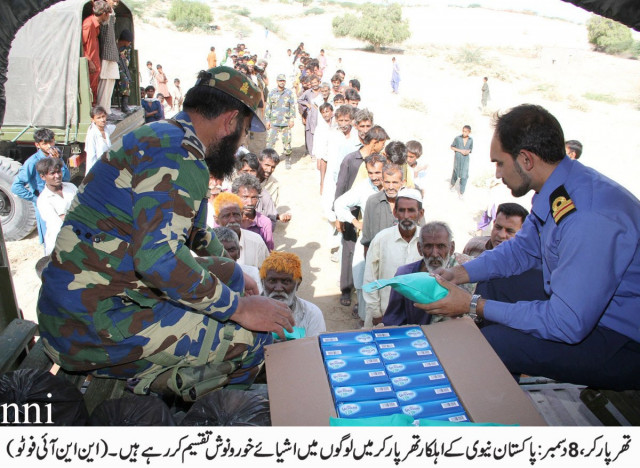Looking ahead: Without foresight, IDPs will only move in circles
Driven out by consequent military operations, people of tribal belt still a long way off from being ‘rehabilitated’.

Imagine a sea of people converging at a single point. That was Khyber-Pakhtunkhwa following the Soviet war. Now, over 30 years later, the province is still stretching the limits of its hospitality. Hundreds of thousands of families from the tribal belt are fleeing military offensives as they precariously slip through the clutches of militants or ammo-loaded gunship helicopters hovering above them.
According to the FATA Return and Rehabilitation (RR) strategy outlined by the government, the figure for internally displaced persons (IDP) stands at 274,726 families from the Federally Administered Tribal Areas and the Frontier Regions (FR).
The largest number of families displaced is from Khyber Agency: 109,788. It is followed by 72,879 families from North Waziristan, 36,767 from South Waziristan, 29,051 from Orakzai, 25,865 from Kurram and 376 from FR Tank.

Peshawar, of course, is where most displaced families come to seek refuge. A total of 72,145 families sought refuge in Peshawar, 58,683 in Bannu, 29,788 in DI Khan, 21,845 in Kohat, 12,651 in Tank, 9,797 in Kurram, 8,997 in Nowshera, 1,853 in Khyber and 1,107 in Hangu.
Not all of these families are still away from home. The data states a total of 162,338 registered displaced families have returned to different parts of the tribal belt. Of these, 72,895 families have returned to Bajaur, 36,759 to Mohmand, 21,937 to Kurram, 11,260 to Khyber, 9,224 to Orakzai, 8,411 to South Waziristan and 1,852 families to FR Tank.
A comparison of the security outlook of 2014 with 2008 shows Swat, Bajaur, Mohmand, Khyber and most parts of Orakzai, Kurram, South and North Waziristan are under the control of militants. On the other hand, Dir, Shangla, Buner, FR Tank, Darra Adam Khel, Hangu and Malakand are contested by the government and militants. This year, most of the militants’ territorial gains have been reversed. However, the Mehsud area of South Waziristan is still unstable with the presence of militants.
While military operation Zarb-e-Azb continues in North Waziristan Agency, the data shows Lower Orakzai has been cleared while security forces are still present in Upper Orakzai. Mohmand and Bajaur, on the other hand, are still rumbling from IED explosions and cross-border firing.

In Khyber, which has a complex history of militancy, Bara has been said to be cleared while security forces are still carrying out operations in Tirah.
Where the people go, the money follows
The influx of people means massive resources are needed to help the displaced.
The FATA Return and Rehabilitation (RR) strategy shows $802 million has been earmarked for the rehabilitation of the displaced population and the war-torn region.
A presentation of the proposed RR strategy states the plan will be executed in three phases. Rehabilitation is to be completed within 24 months, while medium-term development will take a period of two to five years. Similarly, long-term goals will be achieved over five years and beyond.
The initial budget indicates return of the displaced population will cost $82 million. The money will be utilized as cash grants to hire transport.
This component will begin as soon as their return is possible.
Rehabilitation, starting with January 15, 2015, will cost $100 million while housing compensation will cost $320 million. The long-term component will cost $300 million.
In addition to this, the proposed strategy also offers suggestions for reinforcement of law and order, expansion of government service delivery, reactivation and strengthening of local economy, strengthening social cohesion and peace building.
Chucking money without keen deliberation will serve no end. Constitutional and legal reforms, citizens charter for the people of Fata, local government elections, de-radicalisation are just come of the things the government will have to look into comprehensively.
Providing food and rebuilding houses will clearly not solve the problem on its own.

Providing opportunities, education and health facilities, getting rid of draconian laws, and mainstreaming the tribal belt seem to be the only ways the tribal areas will seize to be just a swathe of land to keep our western neighbour at an arm’s length.
Published in The Express Tribune, January 1st, 2014.













COMMENTS
Comments are moderated and generally will be posted if they are on-topic and not abusive.
For more information, please see our Comments FAQ